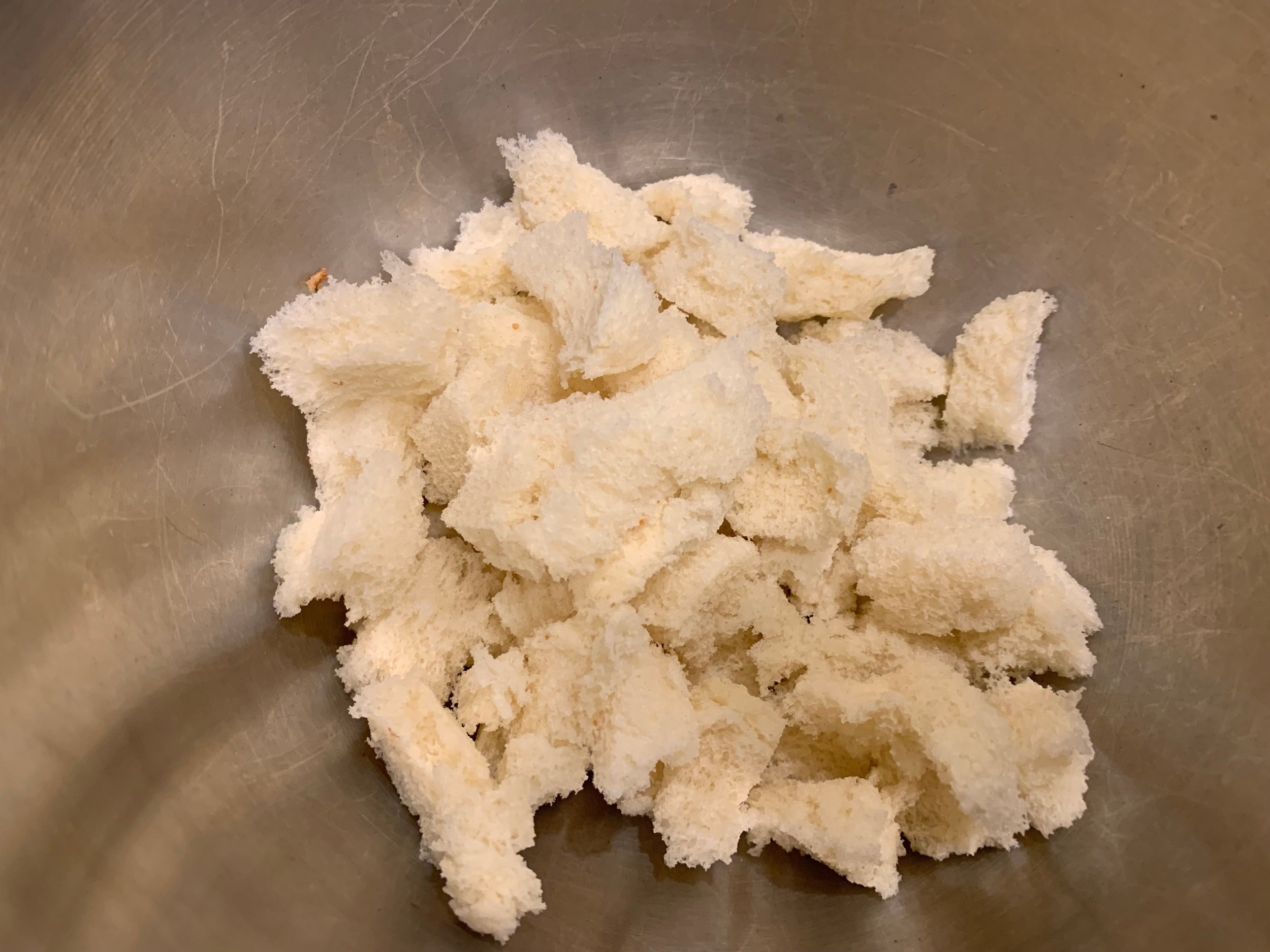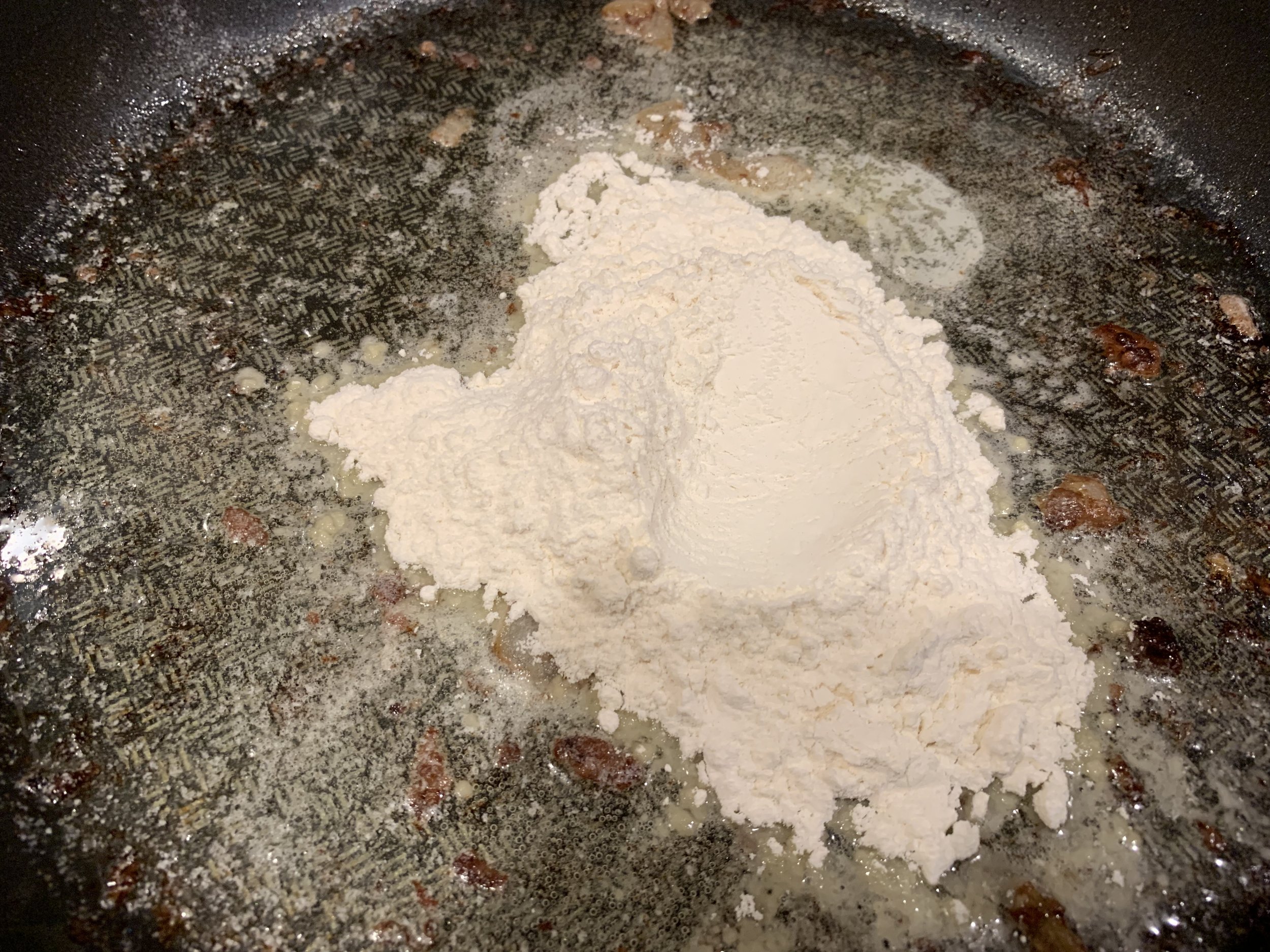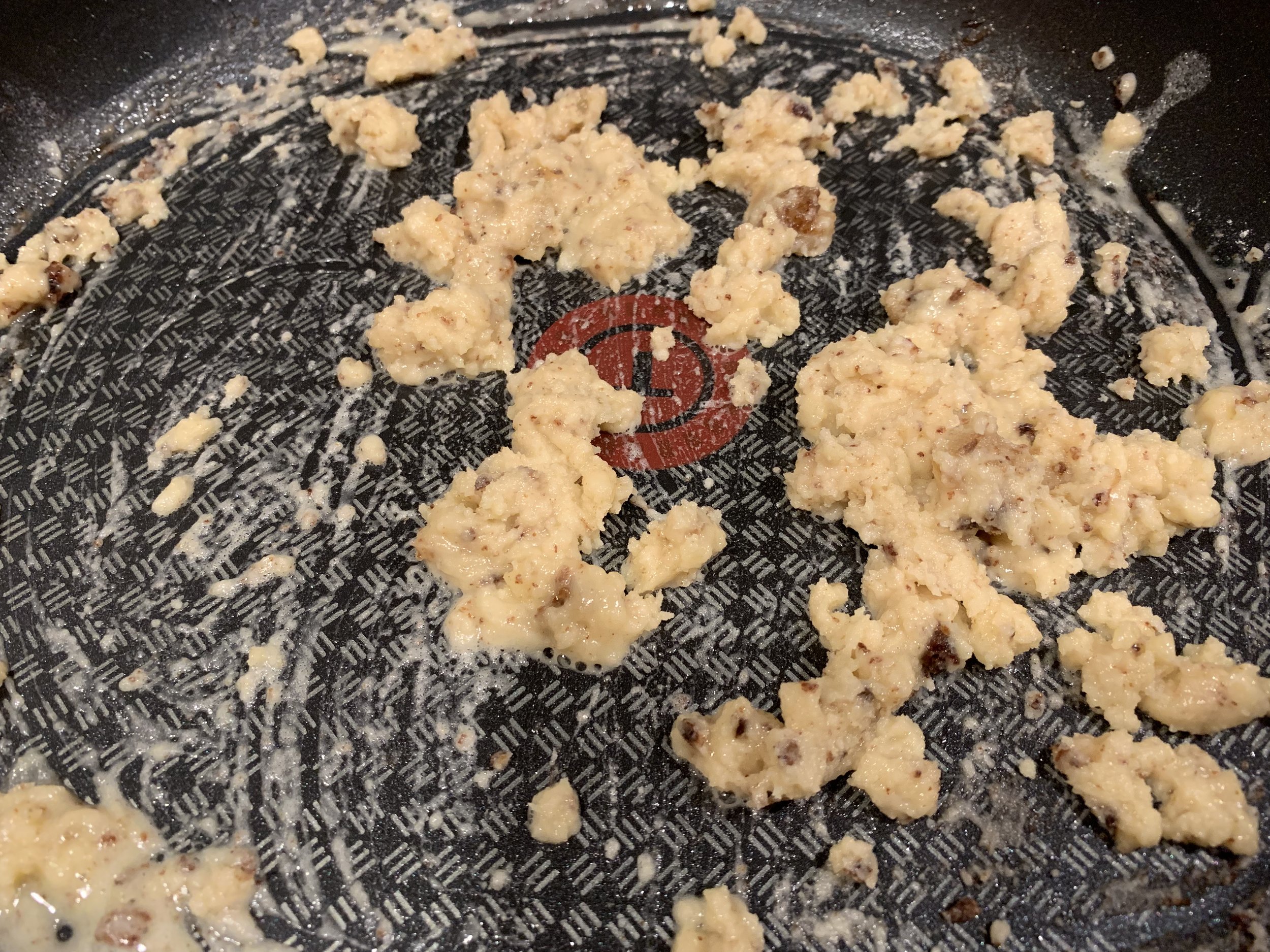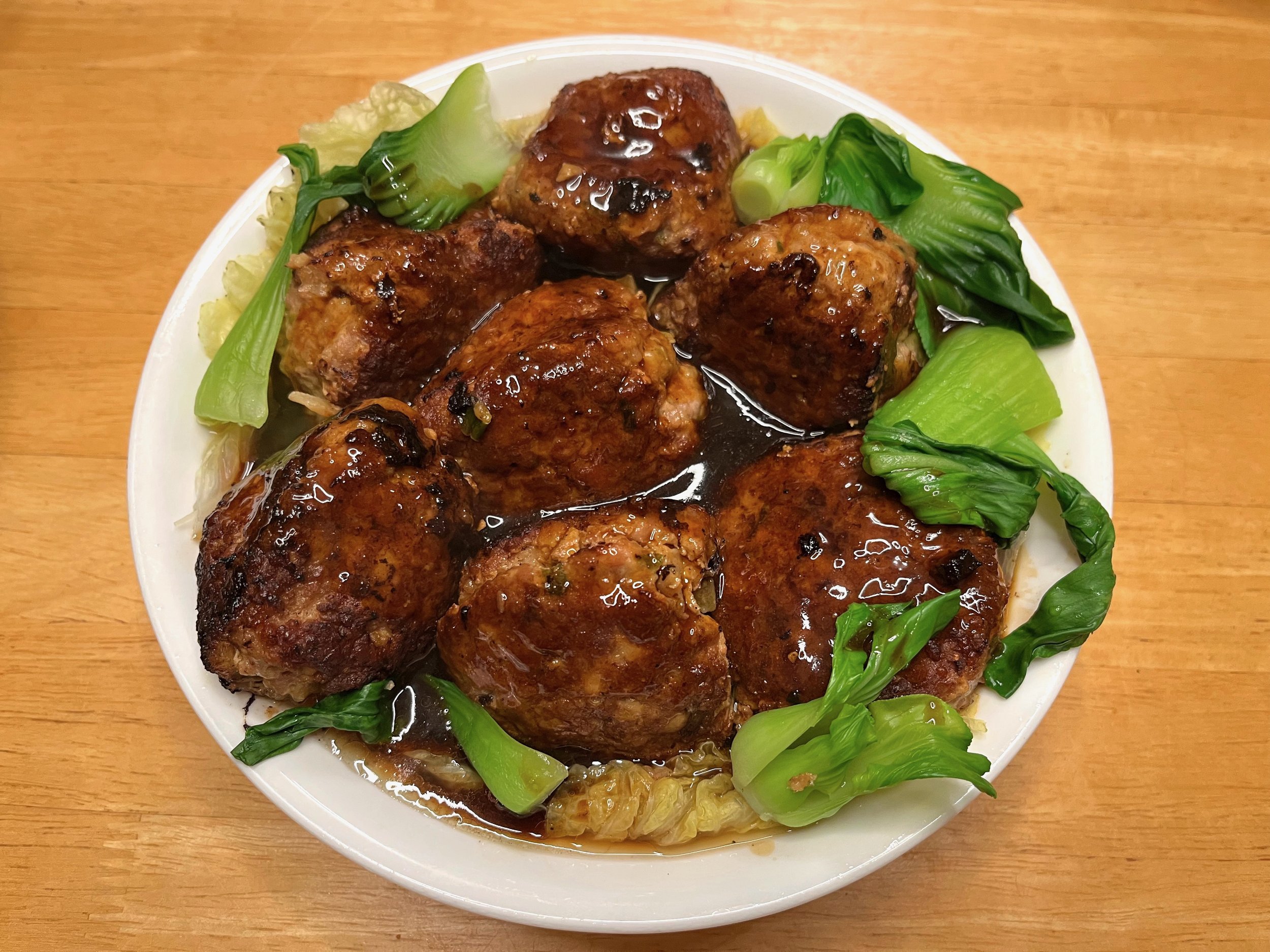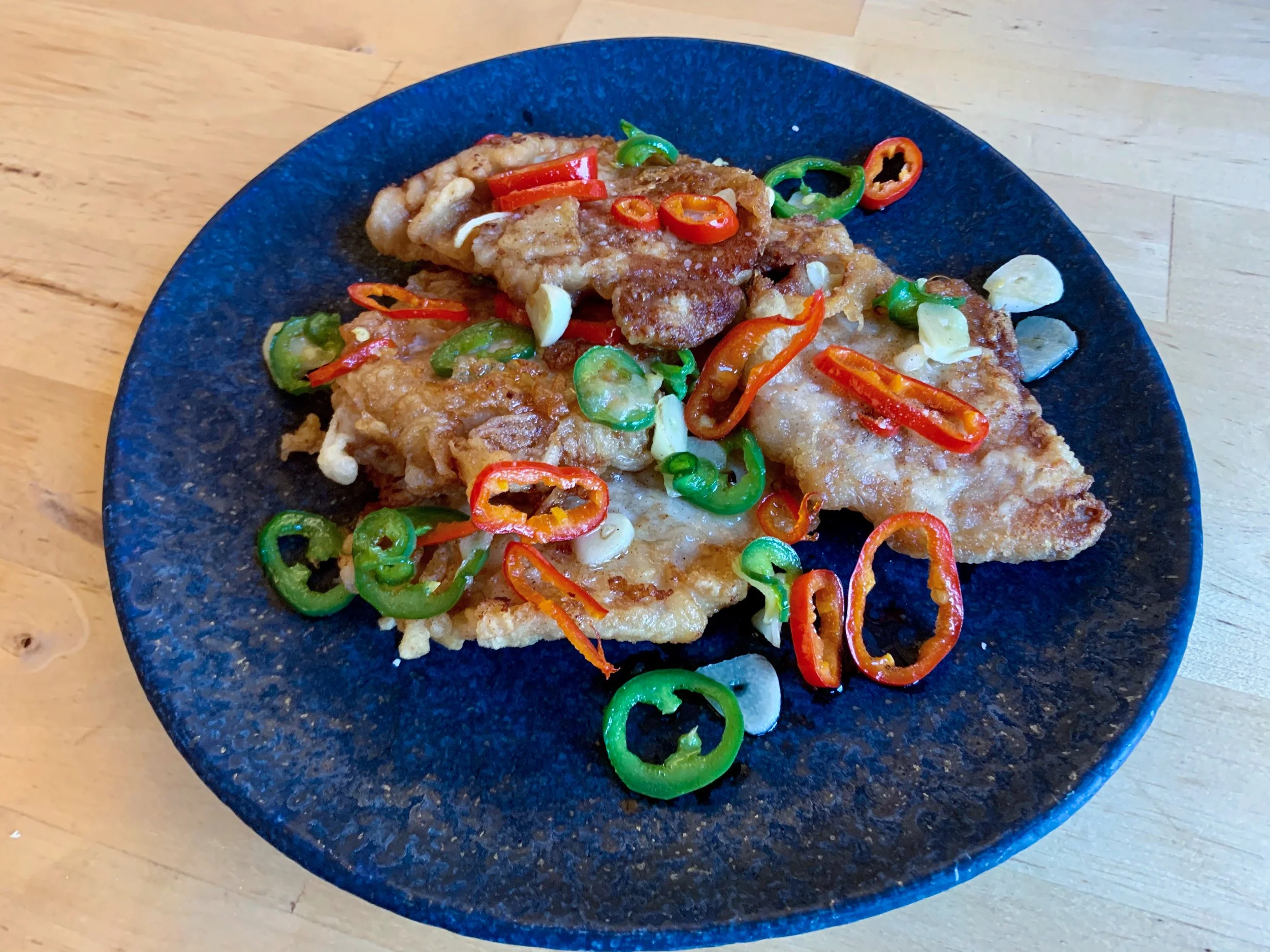Swedish Meatballs
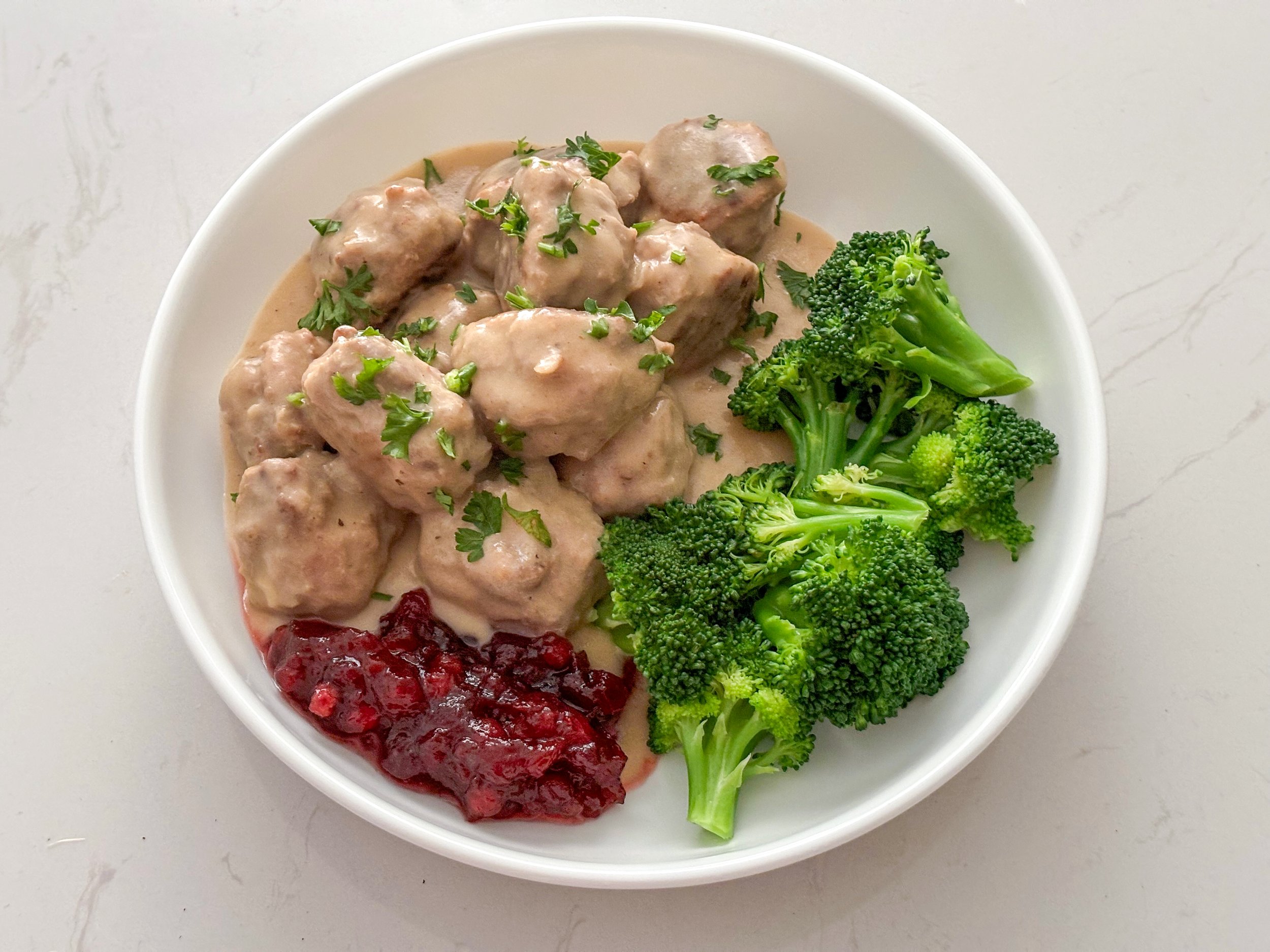
Köttbullar
Swedish meatballs are a light mix of beef and pork, delicately spiced and usually served with a sauce of stock and cream. In America, many of us first encountered these small, deliciously tender meatballs in the food court of that Swedish flat-pack furniture store which has furnished the homes of so many young families. Of all the dishes to come out of Sweden, Swedish meatballs are perhaps the country’s most well-known culinary export. Meatballs are a common feature of nearly all of the world’s cuisines (like sausage, another convenient way to use meat scraps). However, many historians posit that the idea of adding spices to these meatballs, particularly allspice, the signature flavor in modern Swedish meatballs, has its origins not in Scandinavia, but in Anatolia. At the turn of the 18th century, Sweden was embroiled in the Great Northern War, which pitted the Swedish Empire under King Charles XII against a resurgent Russia led by Peter the Great.[1] After his disastrous defeat at the Battle of Poltava, Charles was forced into exile. He fled to Constantinople, where he remained as a guest of the Ottoman court. While there, he is said to have developed a taste for Turkish köfta, lamb meatballs flavored with mint, cumin, and allspice, and sometimes served with a rich sauce made of stock. He returned to Sweden five years later, bringing this dish with him. In the centuries that followed, the dish evolved to suit local tastes and ingredients, with beef and pork replacing lamb, and allspice and white pepper becoming the primary spices.
When a recent tweet from the Swedish government stated that “Swedish meatballs are actually based on a recipe King Charles XII brought home from Turkey in the early 18th century,” the results were depressingly predictable.[2] The headlines turned this historical observation into, “Swedish Meatballs not Swedish!”, and as all too often happens in today’s quickly moving, clickbait-driven discourse, this tweet set off a debate which quickly degenerated into a firestorm of nationalism, name-calling, and accusations of “fake news.”
Personally, I think that the question of whether Swedish meatballs are from Sweden or Turkey is not a very meaningful one, as it hinges entirely upon your conception of the word “from.” Perhaps the more relevant question is: how much of an idea has to be original before it is credited to the person or people who modified it? Copyright lawyers might have a good answer to that question, but I think the answer in this case is far from clear. The word “Swedish” in the name of this dish, it’s worth noting, was originally added by who else but Americans, with our penchant for recklessly sticking country names on foods.[3] Initially, this was meant to be descriptive: “These are meatballs like they eat in Sweden.” However, understandably, many people interpret the name as: “These meatballs were invented in Sweden.” This leads us to the question of where to draw the line between adaptation and appropriation, which is perhaps too weighty a topic for the introduction of a blog post.
But as it pertains to this particular recipe, it is factual to say that the idea of making meatballs spiced with allspice and cooked with a sauce is not a Swedish one, and that therefore, the ancestor of modern Swedish meatballs is not Swedish. However, the idea has evolved in Sweden over the course of 300 years into its current form, using pork and beef and a cream sauce—sufficiently different from its ancestor, in my opinion, to be granted a new identity. Whether it’s wise to attach a nation’s identity to any object is an entirely separate question…had this new dish been called something like “Beef Meatballs with Cream Sauce,” I doubt that this particular minor international incident would ever have occurred.
Too often, we get wrapped up in this idea of singular exceptionalism. One person, or a group of people, did a great thing, and now that great thing is enshrined forever, immutable and unchanging. This is how we talk about Einstein and the theory of relativity, or the Founding Fathers and the US Constitution. It’s a nice, clean, picture of the world, but the truth, as always, resists this type of oversimplification. Our urge to simplify the contributions of many into the genius of one leads us to neglect the credit due the many others who laid the foundations. No idea exists in isolation, unconnected to other ideas which came before. No culture exists in a vacuum, and our food reflects that. American as apple pie? A British dish made with fruit from Kazakhstan. Italian pasta? Noodles from China, tomatoes from the Americas. Taiwanese chicken curry? A local twist on a Japanese version of a British dish with spices from India. Every dish in existence contains ingredients and ideas from multiple places, a fact which confounds our desire to categorize foods in the nice, neat, labeled boxes of national cuisines.[4] And so what if apple pie is originally British. That doesn’t make it any less American, and there’s certainly nothing wrong with being multinational.
Food at its best is more than just nourishment. It’s a reflection of culture, place, and time. It’s a result of circumstance and environment, a celebration of history and change, a consequence of the spread of good ideas. And it’s a friendly reminder that we are more similar and less alone than we might sometimes think. Meatballs are a pretty good idea. Let’s go make some.
Ingredients
1 lb ground beef
1 lb ground pork
1 onion, finely diced
2 eggs
3 slices white bread, crusts removed
¼ cup milk
1 tsp salt
½ tsp white pepper
¼ tsp allspice
¼ tsp nutmeg
3 tbsp butter
3 tbsp flour
2 cups beef stock
½ cup heavy cream
vegetable oil
parsley (optional)
lingonberry jam
We start this meatball recipe with a panade—a paste made from bread soaked in milk which will help keep the meatballs light and moist. Because we are looking for something light and easily dissolvable, it is best to use a relatively cheap white loaf here, with the crusts removed. Tear the bread into small pieces, place them in a bowl, and pour over ¼ cup of milk. Toss the pieces of bread in the milk until they are fully coated, then let them sit and soak for at least 10 minutes.
While the bread is soaking, let’s cook the onions. It’s important to dice the onion finely, as it will be going into the meatball mix and a large piece of onion can cause a meatball to lose structural integrity. Heat a tbsp of butter in a skillet over medium heat and add the diced onion. Cook, stirring occasionally, until the onions are soft. This should take about 10 minutes as well.
When onions are cooked and the bread has soaked, it is time to assemble the meatball mix. Add the beef and pork to a large mixing bowl, together with the soaked bread and onions. Add a tsp of salt to the mix, together with the spices—allspice, nutmeg, and white pepper. Crack in two eggs, which will help bind the meatballs together. Mix thoroughly with a spatula or clean hands, until the mix is smooth and uniform. If you have a stand mixer, you can use it to combine these ingredients, mixing for 1-2 minutes until smooth.
Now that the mix is ready, we have to begin shaping the meatballs. Line a sheet pan or large plate with parchment paper, upon which we can place the shaped meatballs. Place about 1 tablespoon of mix into your clean palm, and shape the mix into spheres approximately 1 inch in diameter. If you find the mix to be sticking, it can help to dip your hands into cold water. This is a great step to work on in parallel, if you have some helping hands!
When you are done forming the meatballs, it is time to cook them. Heat 1 tbsp of vegetable oil in a nonstick pan over medium-low heat. When the oil is hot, add the meatballs to the pan in a single layer, leaving ample room between meatballs so that moisture doesn’t build up. Fry the meatballs, turning occasionally, until the meatballs are cooked through and browned on all sides, about 8-10 minutes. Transfer the cooked meatballs to a holding dish.
Unless you have a large griddle, you will likely have to work in batches or with multiple pans, so if you have multiple people, it’s efficient to have one person cooking while another is forming. Pan frying always results in meatballs with sides, particularly if the mix is as light as it is for Swedish meatballs. If you want perfectly spherical meatballs, do what the professionals do and deep fry them. Another tip for rounder meatballs is to refrigerate them for a couple hours before cooking them. Another alternate cooking method is to bake the meatballs at 425° F for 20-25 minutes. These meatballs will keep well in the freezer after cooking—if you would like to freeze them, let them cool to room temperature and then place them in a freezer safe zipper top bag.
When all the meatballs are cooked, clear the pan, turn the heat down to low, and add 2 tbsp of butter. Once the butter is melted, add 3 tablespoons of flour to the pan, whisking together to form a roux. We are going for a white roux, so cook for only 1-2 minutes, stirring constantly, until the flour is no longer raw. Add one cup of beef stock to the pan and stir, scraping gently to dislodge any fond on the pan. Once the first cup is well mixed with the roux, add the second cup of beef stock.
Bring to a simmer and continue cooking, stirring occasionally, until the sauce begins to thicken. When the sauce reaches a nappe consistency, coating the back of a spoon, stir in the cream and cook for an additional 1-2 minutes before removing the sauce from the heat. Serve the meatballs with the cream sauce and some lingonberry jam. Garnish with fresh parsley or dill if desired. Swedish meatballs can be served as an appetizer, or as a main course alongside potatoes or egg noodles.
Substitutions
You can choose to use all beef or all pork for this recipe. If you are using all beef, be sure to use a grind with a 20% fat content or higher, to keep the meatballs tender. You can substitute 1 cup panko breadcrumbs for the white bread in the meatball mix.
Lingonberry sauce can be hard to find. Cranberry sauce is a good substitute, as it brings a similar tartness to the dish.
In some parts of Sweden, sour cream is used in the gravy instead of heavy cream, which changes the flavor of the gravy and gives it some acidity. You can also choose to omit the cream entirely.
[1] Charles XII is not the twelfth King Charles of Sweden, he was actually only the sixth.
[2] The Twitter post
[3] We do this with varying degrees of accuracy. Swiss Steak? That’s from England. Dutch Baby? Germany. English Muffins? New York City. Mongolian Beef? Taiwan. Persian bun? Canada. German Chocolate Cake? Named for a man.
[4] Yes, I am aware of the irony, given that we also use cuisine tags on this blog. Consider it a concession to practicality and search engines.
Recipe
Prep Time: 30 min Cook Time: 30 min Total Time: 1 hr
Difficulty: 3/5
Heat Sources: 1 burner
Equipment: nonstick pan, sheet pan
Servings: 50 meatballs
Ingredients
For the Meatballs
1 lb ground beef
1 lb ground pork
1 onion, finely diced
2 eggs
3 slices white bread, crusts removed
¼ cup milk
1 tsp salt
½ tsp white pepper
¼ tsp allspice
¼ tsp nutmeg
vegetable oil
For the Sauce
3 tbsp butter
3 tbsp flour
2 cups beef stock
½ cup heavy cream
parsley (optional)
lingonberry jam
Instructions
1. In a bowl, tear the bread into small chunks, and soak in milk for 10 minutes.
2. Meanwhile, melt 1 tbsp of butter in a skillet over medium heat. Add the diced onion and cook, stirring occasionally, until onions are soft, about 10 minutes. Remove the onions from the heat.
3. In a large bowl, combine the ground beef, ground pork, soaked bread, and softened onions. Crack in two eggs, add the allspice, nutmeg, salt, and white pepper, and mix thoroughly until smooth and uniform.
4. Line a sheet pan with parchment paper, and begin forming the meatballs, about 1 tbsp of mix per meatball. They should be roughly 1 inch in diameter.
5. Heat 1 tbsp of vegetable oil in a pan over medium-low heat. Add the meatballs in a single well-spaced layer and fry, turning occasionally, until browned on all sides and cooked through, about 8-10 minutes. Remove the cooked meatballs to a holding dish. Work in batches if necessary. Alternatively, bake the meatballs on a greased parchment-lined sheet pan at 425° F for 20-25 minutes.
6. When all meatballs are cooked and removed, turn the heat down to low and add 2 tbsp of butter. When the butter is melted, add the flour and whisk to form a roux. Cook the roux for 1-2 minutes, stirring constantly.
7. Add the beef stock one cup at a time, bring to a simmer, and continue stirring until the sauce begins to thicken.
8. Add the cream, stir, and cook for an additional 1-2 minutes.
9. Serve the meatballs with the cream sauce and lingonberry jam, topping with parsley or dill if desired.

